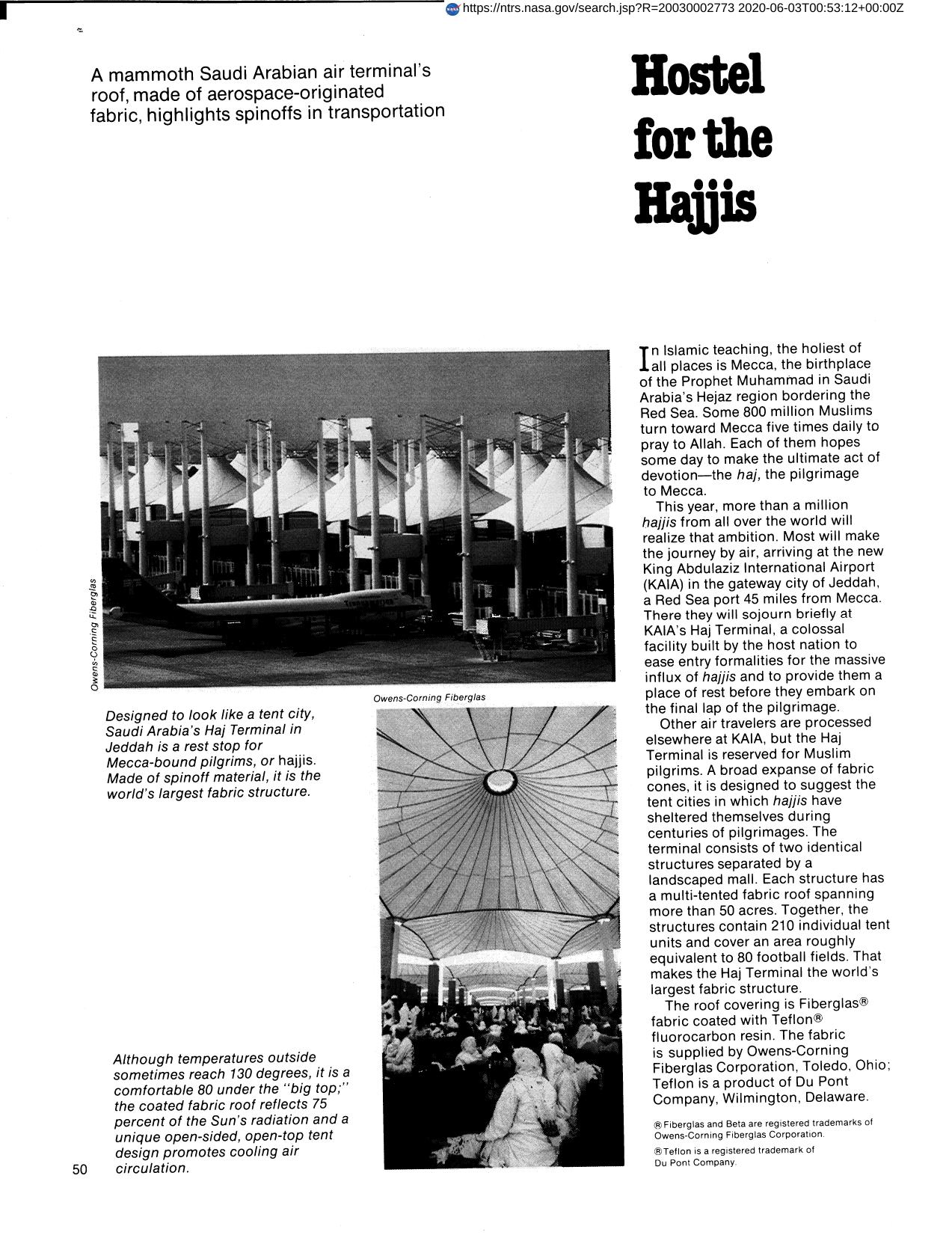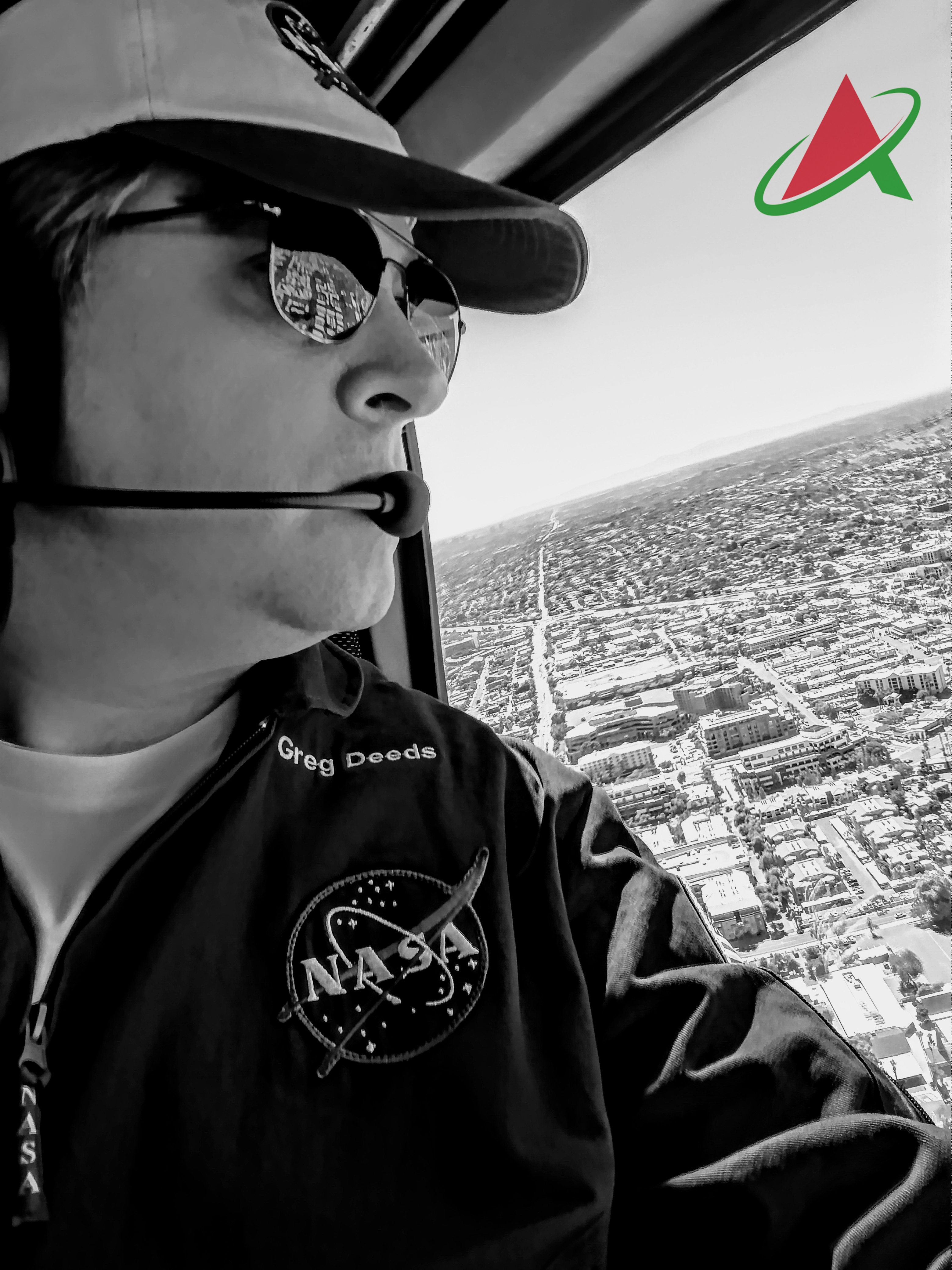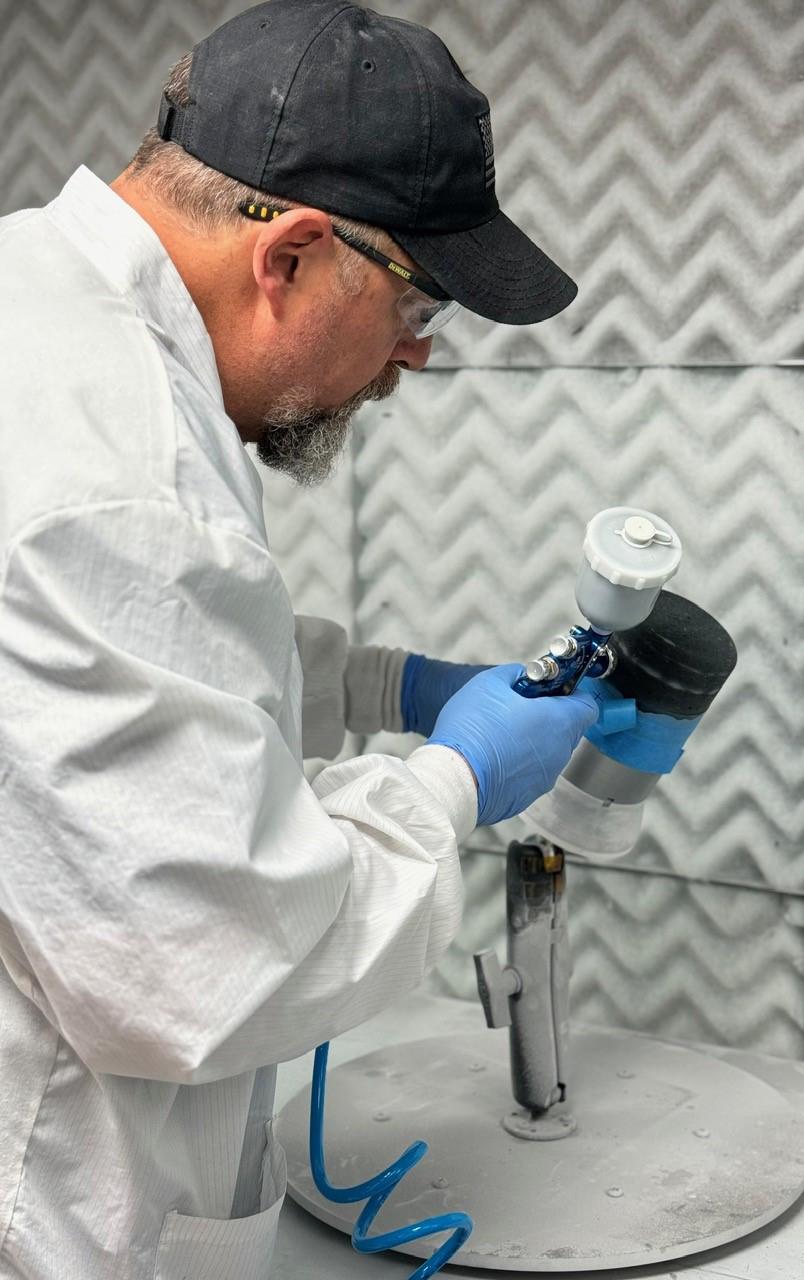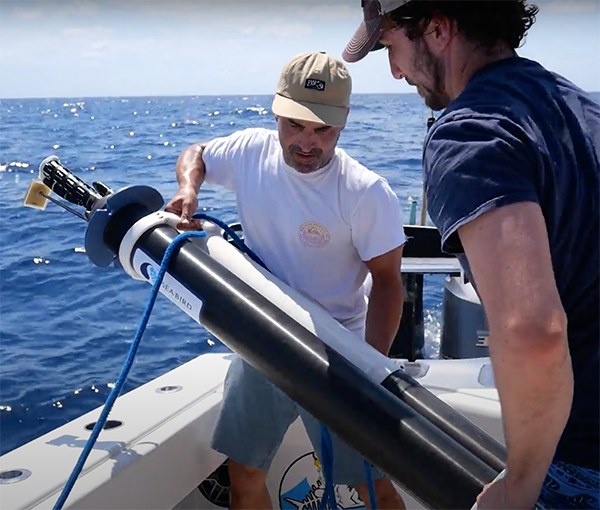
Hostel for the Hajjis
Skidmore, Owings and Merrill (SOM), architects and engineers for the Haj Terminal, and the Saudi Ministry of Defense and Aviation needed to design some type of covered space that would process as many as 5,000 persons an hour and shelter up to 100,000 at a time during the annual haji pilgrimage. In this area, the temperature may reach 130 degrees Fahrenheit. The answer came from a fabric used by NASA in 1967 when they were looking for a new fabric for astronaut space suits. Owens Corning had been experimenting with an ultrafine pure glass finer yarn called Beta. The yarn was woven into a fabric, coated with Teflon and tailored for astronaut wear. SOM decided upon an open-sided, tented-roof structure with white Fiberglas fabric, coated with Teflon on both sides that reflects 75 percent of the solar radiation reaching the roof, thus helping to curb the intense heat.
Full article: http://hdl.handle.net/hdl:2060/20030002773

Hostel for the Hajjis

Hostel for the Hajjis













